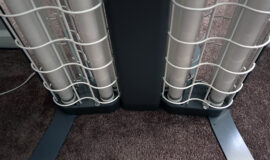Semi-Autonomous Cars Compared – The Best Option for You
You can call them autopilot cars, self-driving vehicles or autonomous cars. Regardless of which you choose, the bottom line is that autonomous technology is taking over the car market and changing the way we drive (or in the future will not drive). Numerous automobile manufacturers around the world are shifting their focus to driverless cars with aims to release their technologies in 2020.
These cars will be the next revolution in technology, allowing people to safely travel, without having to drive a car themselves. This means, those days of parallel parking and driving on a busy highway or freeway will be gone soon. Utilizing a range of protection and safety technologies, autonomous cars will prevent collisions and accidents, while guaranteeing better commuting and long-distance travel times.
Therefore, whether you are someone who is simply tired of doing all the work behind the wheel or a car enthusiast who is interested in technology, it is time to embrace the future of driving. Look below to learn about the best semi-autonomous vehicles today (which may not deliver a complete self-driving experience, but somewhat close):
BMW 750i xDrive
BMW has also given significant attention to autonomous technology and was one of the first brands to offer cars with self-driving capabilities (7-series). The BMW 750i xDrive’s technology features a full driving-aid system that uses lane departure warning, automatic braking system, and a range of other advanced technologies to prevent front-end collisions. Also equipped with an Active Cruise Control, you can easily sit back and relax during traffic jams, as your vehicle drives itself.
Mercedes-Benz S65 AMG Coupe
This high-performance coupe functions similar to the BMW 750i xDrive and features most of the same driving-aid technology. With cameras mounted right into the emblem on the Mercedes-Benz S65 AMG coupe’s grille, the luxury two-door vehicle enables drivers to avoid front-end collisions and automatically stay in the lanes. With five radar units pointed in various directions and an additional camera in the windshield, this vehicle from Mercedes also proves to be the better at sensing oncoming traffic than the BMW 7 series.
Volvo XC90 T8 Hybrid
Just like Tesla Motors, Volvo has made promises to release a fully functioning autonomous vehicle on the roads by 2017. These vehicles would feature amazing autonomous technology that could enable drivers to stream and watch HD movies, while the car drives itself – offering maximum safety and convenience. Meanwhile, the automaker is making waves with semi-autonomous cars like the Volvo XC90 T6 and T8 Hybrid models that are equipped with an IntelliSafe Autopilot mode. This technology is functions similar to what is found in Model S and has the capability of automatically braking in intersections, upon sensing oncoming traffic.
Tesla Model S Autopilot
Tesla Motors is without doubt leading the autonomous cars arms race, already introducing a semi-autonomous vehicle that proves to deliver the best driverless experience (as compared to the ones mentioned above). The Tesla Model S cars (both the P85D and P90D) with the help of a recent software update for 2016 have the capability of adjusting speed to traffic conditions, change lanes, parallel park and steer down the highway automatically with a push of a button. Using a combination of sensors, radars, cameras, and electrical technologies, Tesla Model S cars use real-time data collected from the road and traffic to maintain their self-driving mode.





